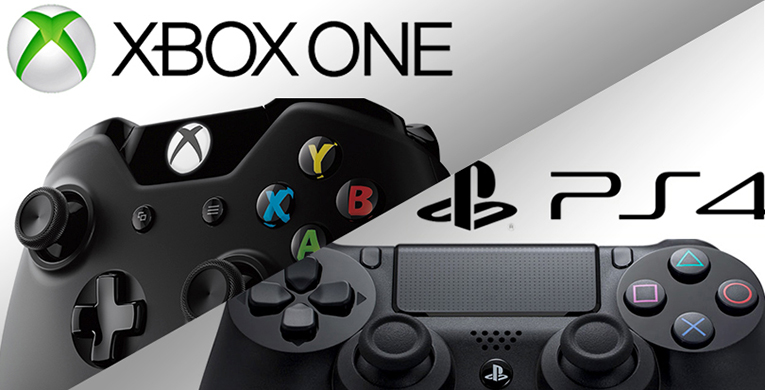
With the release of the new Xbox One and PlayStation 4, commentary on the “console wars” has been flying, begging every gamer to pick a side. Some have decided to stick with their usual console, some have made the leap across systems and others have attempted to avoid the feud, choosing instead to stick with PC gaming or consoles made by other companies, such as Nintendo.
Now that initial sales have been tallied and consumer reviews released, the console wars seem to be dying down; however, with the coming of the new year comes great change in the gaming world.
Within the next year or two, two new consoles of sorts will be released, and some speculate that they will blow the wars out of the water: Project Christine and the Steam Machine.
Project Christine is a project by Razer, a company known for its powerful gaming laptops and is designed to take the PC gaming world by storm. It is designed to be a fully modular PC with a liquid cooling system and “active noise cancellation” making it “silent, but powerful,” according to their website, razerzone.com/christine.
The modular design would make upgrading the system simple, even for someone with little to no knowledge of computers. Each component of the PC is encased in a pod that attaches to the main tower, and the pods can be attached in any order in any slot, as the system automatically syncs the components. The system will be able to run any existing operating system, and it will function as a normal desktop, though more powerful with precautions taken to avoid the downfalls of overclocking, or running the system for an extended period of time.
Project Christine will be Razer’s first attempt at tackling desktop PCs, and while Razer’s laptops have been met with much approval from the market, some are skeptical about this new project.
While it seems like a wonderful idea in theory, the cooling system could present a problem, not to mention the issue of pricing. While the website boasts an innovative cooling system using mineral oils and water to cool each individual pod, some are skeptical, such as the writers at Digital Trends, who point out that without a working prototype available for consumers to view and interact with, “such claims have to be taken with a sizeable spoonful of skepticism.”
In addition with each pod having to have its own cooling system, the project could quickly become expensive, which brings up what is probably the biggest issue: pricing. A concept such as this one could potentially be far too expensive for the average consumer. The price of the base tower to which all pods connect is projected to be between $400-500, and each individual component pod would add to the price, which could reach well beyond the $1,000 range.
Razer proposes to combat this issue by charging a monthly subscription fee rather than one large lump sum. However, the payment system would not end after a set number of months; rather, it would continue so long as the consumer keeps the product, though with the regular payment the consumer would be entitled to new hardware as soon as it is released, so long as he or she returns the old hardware.
The overall response to Project Christine seems to be mixed. Some students, like freshman Jason Smith greets the concept with enthusiasm.
“I think it’s about time for something like this to come along,” Smith said. “Nowadays if you have a computer for a year and a half, most of it is obsolete. This seems like a great way for you to update what needs to be updated quickly and with little issue.”
Others, such as freshman Brandon Allen, seem skeptical, particularly of the price. When asked about his opinion regarding the concept, he said, “Until they reveal a price point for Christine, it’s hard for me to say anything. My problem is that it will probably be highly overpriced for a while, which again leads to not many people buying it.”
The Steam Machine is Valve’s chosen response to the console wars. It is an attempt to bring PC gaming to the living room, combining the best features of PC gaming with those of standard console gaming. There are thirteen Steam Boxes made by 13 companies, ranging from high-end designers like Alienware to more affordable producers like CyberPowerPC. Each console, while they differ in aesthetics and basic specifications like Random Access Memory capacity, will run the Linux-based Steam Operating System.
As there are so many physical consoles and they have only just been released, there is not much information available, though there is still the hotly debated issue of pricing.
With the 2014 International Consumer Electronics Show (CES) came further information about the pricing of each console. The price range seems to be between $500-$1500 depending on the console’s individual specs and designing company, according to an article on usgamer.net. The cheapest consoles released so far are the $499 CyberPowerPc and IBuyPower consoles, while the most expensive is the $6,000 Falcon Northwest Tiki.
Again, reactions to this console system are mixed among the student population. But, some find it appealing.
“That sounds awesome because, well, Steam/Valve plus console equals I don’t have to deal with the ludicrousness of Sony and Microsoft,” said freshman Philip Snyder.
Others believe that, ultimately, it is not worth the money it costs to get one.
“Part of the whole Steam appeal is that it will run on your system,” said freshman Jason Smith. “That everything can be on your computer. You can go from checking email to browsing to games all on the same machine. Yes the Steam Box is essentially a computer, but who’s to say we can trust Valve to make a machine able to handle everything a computer should?”
When all is said and done, both consoles have their pros and cons. Pricing certainly seems to be an issue, but the ideas are ingenious regardless of their proposed price range. Only time will tell whether these machines will take over the console wars or crash in the market.































